Kyle Rittenhouse verdict: Not guilty on all counts

Kyle Rittenhouse verdict: Not guilty
Kyle Rittenhouse was acquitted of all charges in the August 2020 shooting that left three men injured, two fatally.
KENOSHA, Wis. - Kyle Rittenhouse was acquitted of all charges Friday after pleading self-defense in the deadly Kenosha shootings that became a flashpoint in the debate over guns, vigilantism and racial injustice in the U.S.
Rittenhouse, 18, began to choke up, fell forward toward the defense table and then hugged one of his attorneys as he heard a court clerk recite "not guilty" five times. A sheriff’s deputy whisked him out a back door.
"He wants to get on with his life," defense attorney Mark Richards said. "He has a huge sense of relief for what the jury did to him today. He wishes none of this ever happened. But as he said when he testified, he did not start this."
SIGN UP TODAY: Get daily headlines, breaking news emails from FOX6 News
The verdict in the politically combustible case was met with anger and disappointment from those who saw Rittenhouse as a vigilante and a wannabe cop, and relief and a sense of vindication from those who regarded him as a patriot who took a stand against lawlessness and exercised his Second Amendment right to carry a gun and to defend himself.
Rittenhouse was charged with homicide, attempted homicide and reckless endangering for killing two men and wounding a third with an AR-style semi-automatic rifle in the summer of 2020 during a tumultuous night of protests over the shooting of a Black man, Jacob Blake, by a white Kenosha police officer.

Kyle Rittenhouse trial: Not guilty on all counts
Kyle Rittenhouse was acquitted of all charges Friday.
Rittenhouse, a then-17-year-old former police youth cadet, said that he went to Kenosha to protect property from rioters but that he came under attack and feared for his life. He is white, as were those he shot.
The anonymous jury, whose racial makeup was not disclosed by the court but appeared to be overwhelmingly white, deliberated for close to 3 1/2 days.
Rittenhouse could have gotten life in prison if found guilty on the most serious charge, first-degree intentional homicide, or what some other states call first-degree murder. Two other charges each carried over 60 years behind bars.
Kenosha County District Attorney Michael Graveley said his office respects the jury’s decision, and he asked the public to "accept the verdicts peacefully and not resort to violence."

David Hancock, Kyle Rittenhouse spokesperson, discusses not guilty verdict
David Hancock, a family spokesperson for the Rittenhouse family, spoke at length to the media following Rittenhouse's not guilty verdict.
What did Kyle Rittenhouse do to be on trial?
Rittenhouse testified that he acted in self-defense when he fatally shot two protesters and wounded a third during an August 2020 night of unrest in Kenosha following the police shooting of Jacob Blake, a Black man.
Rittenhouse, who was 17 at the time of the shootings, is charged with intentional homicide and other counts for killing Joseph Rosenbaum and Anthony Huber and wounding Gaige Grosskreutz.
Wisconsin law allows the prosecution and defense to ask that jurors be told they can consider lesser charges as part of the instructions they receive before deliberating. Kenosha County Judge Bruce Schroeder ruled on those lesser charges on Nov. 13.
READ MORE: Kyle Rittenhouse verdict: Reaction to acquittal on all counts
The list of charges the jurors were allowed to consider include:
- First-degree reckless homicide Pertains to death of Joseph Rosenbaum Max. sentence 60 years (40 years confinement)
- Pertains to death of Joseph Rosenbaum
- Max. sentence 60 years (40 years confinement)
- First-degree recklessly endangering safetyPertains to Richie McGinnis
- Pertains to Richie McGinnis

Kyle Rittenhouse testifies about Gaige Grosskreutz holding a gun toward him during his trial at the Kenosha County Courthouse on November 10, 2021 in Kenosha, Wisconsin. (Photo by Mark Hertzberg-Pool/Getty Images)
- Max. sentence 12 ½ years (7 ½ years confinement)
- First-degree recklessly endangering safety Pertains to unidentified man Max. sentence 12 ½ years (7 ½ years confinement)
- Pertains to unidentified man
- Max. sentence 12 ½ years (7 ½ years confinement)
- First-degree intentional homicide Pertains to death of Anthony Huber Mandatory life sentence Jurors also considered: Second-degree intentional homicide (max. 60 years, 40 years confinement) and first-degree reckless homicide (max. 60 years, 40 years confinement)
- Pertains to death of Anthony Huber
- Mandatory life sentence
- Jurors also considered: Second-degree intentional homicide (max. 60 years, 40 years confinement) and first-degree reckless homicide (max. 60 years, 40 years confinement)
- Attempted first-degree intentional homicide Pertains to shooting of Gaige Grosskreutz Max. sentence 60 years (40 years confinement) Jurors also considered: Attempted second-degree intentional homicide (max. 30 years, 20 years confinement) and first-degree recklessly endangering safety (max. 12 ½ years, 7 ½ years confinement)
- Pertains to shooting of Gaige Grosskreutz
- Max. sentence 60 years (40 years confinement)
- Jurors also considered: Attempted second-degree intentional homicide (max. 30 years, 20 years confinement) and first-degree recklessly endangering safety (max. 12 ½ years, 7 ½ years confinement)
What was Kyle Rittenhouse's defense?
Rittenhouse's lawyers put on about 2 1/2 days of testimony to the prosecution's five, with the most riveting moment coming when the 18-year-old told the jury that he was defending himself from attacks when he used his rifle to kill two men and wound a third on the streets of Kenosha in the summer of 2020.
Why did Kyle Rittenhouse go to Kenosha?
Two days after the shooting of Jacob Blake, Rittenhouse said he went to downtown Kenosha and volunteered to clean graffiti off a high school. He met the owners of a car dealership where vehicles had been burned, offered his "condolences," and said he wanted to help. He said the owners asked his friend to protect their business, and that he joined his friend and others that night. He took his semi-automatic rifle and first-aid supplies. He gave his bulletproof vest — which he said was issued by the Grayslake Police Department — to a friend. He said he felt he wouldn't need it "because I'm going to be helping people."
What did Kyle Rittenhouse say about his encounters with Joseph Rosenbaum?
Rittenhouse testified that Rosenbaum threatened his life twice. He said he had been putting out fires and asking people if they needed medical help when he saw Rosenbaum carrying a steel chain and wearing a mask. Rosenbaum began screaming at him, he said.
"He was just mad about something. He's screaming, 'If I catch any of you (expletives) alone I'm going to (expletive) kill you,'" Rittenhouse testified.
FREE DOWNLOAD: Get breaking news alerts in the FOX6 News app for iOS or Android.
When he encountered Rosenbaum again later, Rittenhouse said that Rosenbaum shouted, "I'm going to cut your (expletive) hearts out and kill you."
Later, Rittenhouse was walking with a fire extinguisher after hearing protesters were burning cars at one of the lots his friends were trying to protect. Rittenhouse said he saw a fire in a truck on one of the lots when Joshua Ziminski approached him with a gun. Rosenbaum came out from behind some cars and "ambushed" him, Rittenhouse testified.

Kyle Rittenhouse
Rittenhouse said he tried to run away but Rosenbaum chased him as Ziminski yelled "get him" and "kill him." Rittenhouse testified that Rosenbaum threw a bag at him that he mistook for the chain, and that he pointed his rifle at Rosenbaum but Rosenbaum didn't stop. He heard a gunshot behind him and "I remember his hand on the barrel of my gun," Rittenhouse said.
Rittenhouse said he fired four times, went up to Rosenbaum to see if he could help him, then ran away because people were yelling "get his ass, get him, get him." He also said later that he feared that if he let Rosenbaum take his gun, "he would have used it and killed me with it and probably killed more people."
What happened as Kyle Rittenhouse ran?
Rittenhouse said Huber hit him in the neck with a skateboard and someone hit him in the back of the head with a rock, causing him to stumble. A man tried to kick him in the face after he went down, Rittenhouse said. He fired twice at that man but missed. Rittenhouse said he feared the man "would have stomped my face in."
Huber hit him in the neck again with the skateboard and grabbed his gun, Rittenhouse said.
"I can feel the strap coming off my body," he said. "I fire one shot."
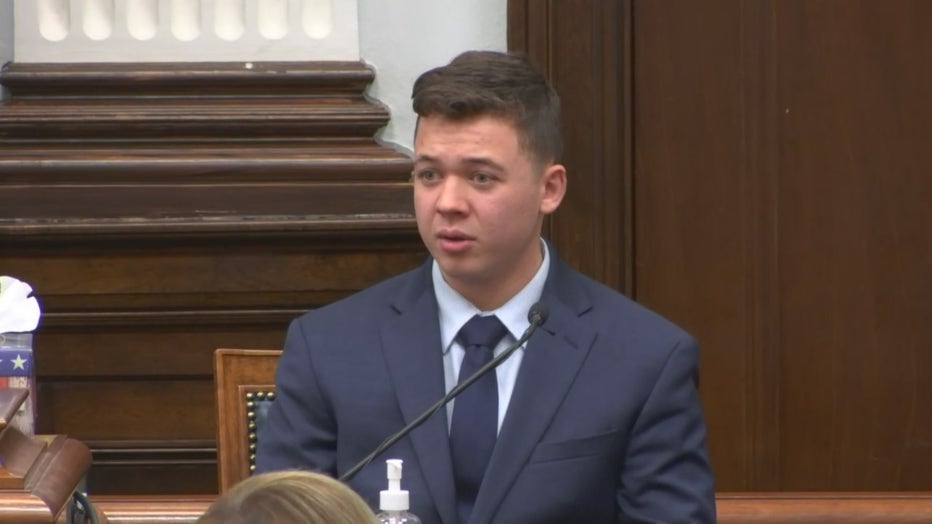
Kyle Rittenhouse
In the next instant, Grosskreutz ran up to him. He lowered his rifle as Grosskreutz raised his hands in a "surrender" motion. But Grosskreutz was holding a pistol and as Rittenhouse lowered his weapon Grosskreutz pointed the pistol "directly at my head," Rittenhouse said. He fired once, hitting Grosskreutz in the arm.
What did Kyle Rittenhouse say about his state of mind?
A defendant's state of mind is crucial in a self-defense case. The defendant must show that he reasonably believed his life was in danger and the amount of force he used was appropriate to win an acquittal. Assistant District Attorney Thomas Binger pressed Rittenhouse about his intentions during cross-examination, asking him whether he meant to kill the three men.
"I didn't intend to kill them. I intended to stop the people who were attacking me," Rittenhouse said.

Kyle Rittenhouse
Defense attorney Mark Richards also asked Rittenhouse at one point why he stopped running from Rosenbaum — relevant in a case where jurors may consider whether he did all he could to move away from danger.
"There was no space for me to continue to run to," Rittenhouse answered.
How did the prosecution approach Kyle Rittenhouse's case?
Prosecutors endeavored to show Rittenhouse’s fears for his life on the night of Aug. 25, 2020, weren’t justified.
State witness Dominick Black, a friend of Rittenhouse who similarly showed up with a weapon, told jurors he bought the rifle for Rittenhouse months before the shootings because Rittenhouse wasn’t old enough to own one at the time.
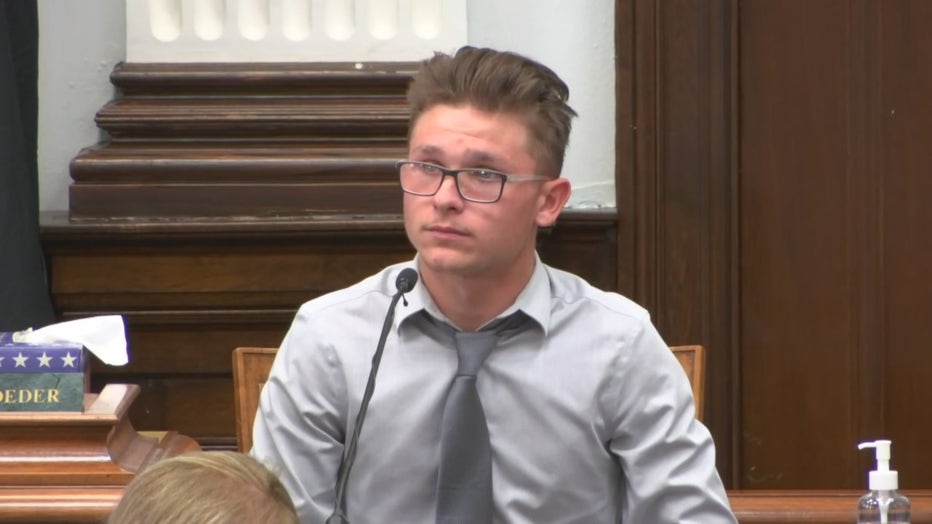
Dominick Black
He testified that a gun sling Rittenhouse wore around his neck and shoulder area included a strap that anchored the gun to Rittenhouse’s body. He said that strap would have made it difficult for anyone to pry the gun away — undermining the defense claim that Rittenhouse feared losing control of his weapon.
Gaige Grosskreutz testified that he carried a loaded pistol that night and acknowledged that it was aimed at Rittenhouse when Rittenhouse shot him — although Grosskreutz maintained he didn't intentionally aim the gun and said he wouldn't have fired.
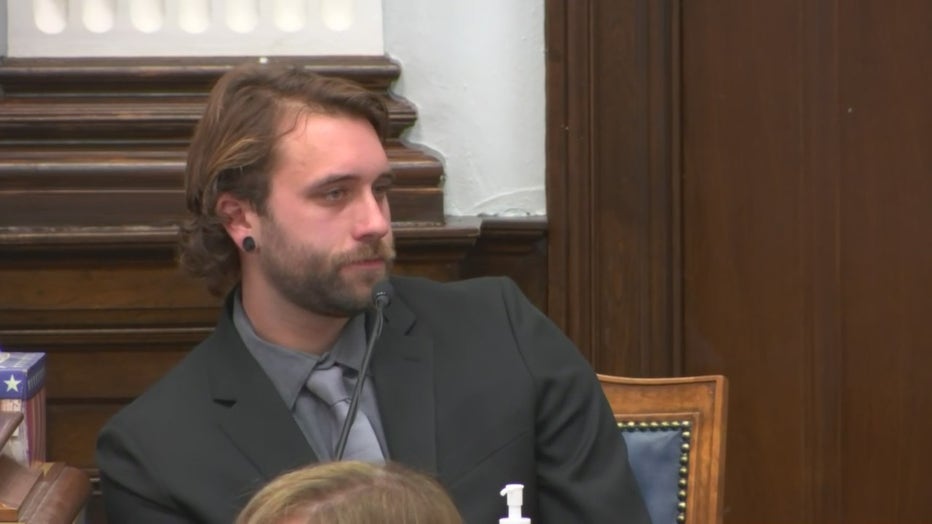
Gaige Grosskreutz
Some legal experts believe some of the prosecution witnesses did not help their case.
Ryan Balch is a military veteran who carried an AR-style rifle that night and patrolled with Rittenhouse. He told jurors how Rosenbaum made ominous threats within earshot of Rittenhouse.
"If I catch any of you guys alone tonight I’m going to f—- kill you!" he recalled Rosenbaum shouting.
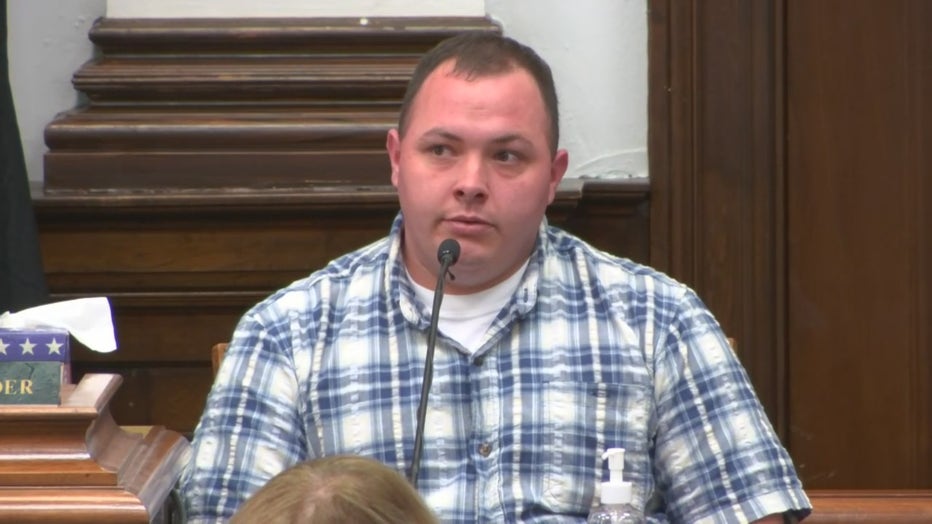
Ryan Balch
Another witness, videographer Richie McGinniss, described Rosenbaum chasing Rittenhouse and lunging for Rittenhouse’s gun. When prosecutor Thomas Binger pressed McGinniss to concede he didn't know what Rosenbaum's intent was, McGinniss had a pointed — and damaging — answer.
"Well," McGinniss promptly replied, "he said, `F—- you.′ And then he reached for the weapon."
What happened during Kyle Rittenhouse's trial?
While the Rittenhouse testimony was the most compelling of this trial, some of what was said in court while the jury was out captured just as much attention.
Rittenhouse's testimony was interrupted by an angry exchange in which his lawyers demanded a mistrial over what they argued were out-of-bounds questions asked of him by the chief prosecutor.
The judge, though plainly mad at the prosecutor, did not immediately rule on the request.

Kyle Rittenhouse trial: Judge Schroeder admonishes prosecution for line of questioning
Kenosha County Judge Bruce Schroeder, after excusing the jury, admonished prosecutor Thomas Binger for his line of questioning with Kyle Rittenhouse on the stand.
The next day in court, attorneys sparred over the technology used to zoom in on video and create enlarged images, with prosecutors alleging the defense was taking advantage of the 75-year-old judge's admitted lack of understanding about current technology.
"I will tell you that I totally agree with your comment about my lack of familiarity with these concepts," Judge Schroeder told the attorneys without the jury present. "This is a difficult concept for me, yes."
In both cases, prosecutors were arguing for enlarging key images. Much of the action that night was captured on sometimes hard-to-decipher cellphone video, as well as by a drone. In the end, the judge said he was leaving it up to the jury to decide how much weight to give the image.
What's next for the Kyle Rittenhouse case?
Rittenhouse faces a mandatory sentence of life in prison if convicted of the most serious charge against him.
Who were the jurors?
The jury for this case was selected in a single day on Nov. 1. It started with a pool of more than 150 potential jurors.
In the end, 20 people — 12 jurors and eight alternates — were selected. The judge said he would decide at the end of the trial which ones are alternates and which ones will deliberate. The 20 consisted of 11 women and nine men.
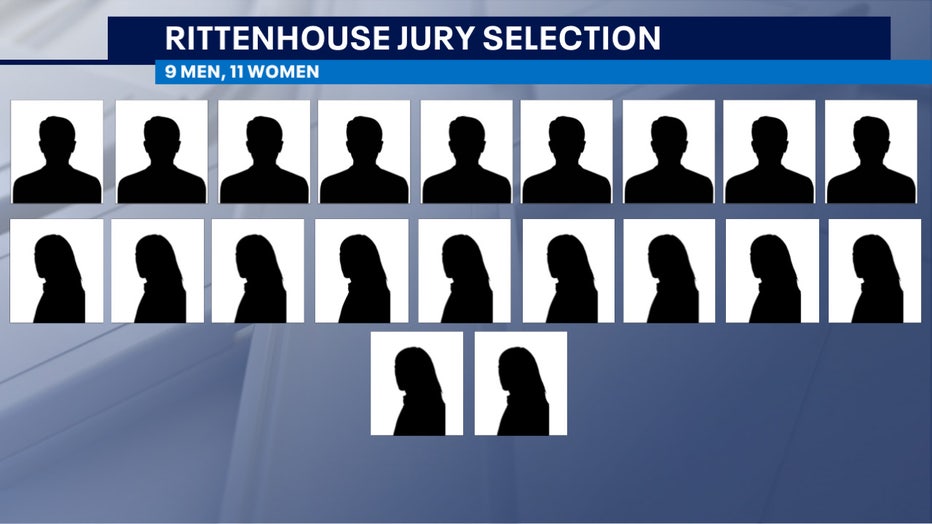
Later in the trial, one male juror was dismissed after telling a joke to a deputy about Jacob Blake. A second juror, a woman, was dismissed for medical reasons.
Associated Press contributed to this report.

